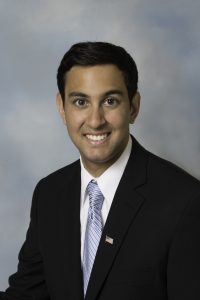Greg Jasani
August 14, 2017
Malpractice is a major concern in the specialty of emergency medicine. Emergency medicine physicians must make quick decisions in the setting of limited time, limited information, and high acuity. EDs are a common source of malpractice liability in the American healthcare system.[i] One study found that the median payout of emergency medicine malpractice claims was $220,000.[ii] To reduce risks, 9 in 10 physicians report engaging in “defensive medicine”, specifically using tests and/or procedures for the sole purpose of reducing the risk of malpractice liability.[iii]
Malpractice concerns also have adverse effects on the wellness and mental health of emergency medicine physicians. On average, emergency medicine physicians spend 50.7 months of their careers involved in litigation.[iv] Additionally, over 75% of emergency medicine physicians will be named in a malpractice lawsuit at some point during their careers.[v] A malpractice claim can have devastating effects on a physician’s well being: “medical malpractice stress syndrome” increases anxiety and depression, and can even lead to thoughts of suicide among providers.[vi]
In a recent article in the Annals of Emergency Medicine, Carlson et al studied physician and hospital factors associated with being named in a malpractice lawsuit.[vii] They conducted a retrospective cross-sectional study on data collected from a national emergency physician group that managed 87 EDs in 15 states. The authors looked at data from January 2010 through June 2014. Physician factors measured were years in practice (excluding residency), board certification, and majority night shift work. Other factors measured were median monthly RVUs generated per hour, data on patient experience, median monthly physician admission rate, total number of patients treated by a physician, and working in multiple EDs. The authors chose these variables because they have a conceptual and perceptual links with the risks of malpractice.
The authors examined over 9,000,000 cases treated by 1,029 different physicians. During the study time, 90 of the included physicians were named in malpractice suits (98 total). Of the 9 independent variables analyzed, only increasing years in practice and total patients treated as an attending physician were associated with being named in a malpractice claim. These results are interesting for several reasons. Traditionally, many believed that more years in practice would decrease risk of being named in malpractice claim as a physician would be more experienced and less prone to mistakes. However, this study found that an emergency medicine physician’s risk of being named in a malpractice lawsuit increased 4% every additional year that he or she practiced. The authors are unable to account for this finding but consider that this could be due to the constantly evolving nature of medicine and the need for providers to receive continuing medical education after residency. Further studies exploring the associations between years in practice and malpractice, and the possible role of post-residency education, are certainly warranted.
The fact that increased total number of patients treated leads to increased malpractice risk is less surprising. More patients means more exposure to a clinical outcome that could lead to a malpractice claim. The fact that patient satisfaction was not related to malpractice risk is also interesting. Research from other medical specialties has shown that patient complaints about physician communication are related to higher malpractice risk.[viii],[ix] However this trend does not appear to apply to emergency medicine providers in this study. The authors posit that this could be due to the brief interactions and lack of relationship building between providers and patients in the emergency department.
This article shows that emergency medicine physicians who have practiced longer and who see more patients are more likely to be named in a malpractice lawsuit. Malpractice claims are, unfortunately, inevitable due to the environment that emergency medicine physicians operate in. Malpractice litigation also places a heavy burden on both the health system and the providers. As with many things in medicine, one of the first steps is identifying who is at risk. This article helps advance our understanding of which physicians are at a higher risk; knowing this will be invaluable in developing strategies for making the healthcare system safer and hopefully reducing the number of malpractice claims filed.
[i] Studdert DM, Mello MM, Gawande AA, et al. Claims, errors, and compensation payments in medical malpractice litigation. N Engl J Med. 2006; 354:2024–33.
[ii] Cohen D, Chan S, Dorfman M. Malpractice claims on emergency physicians: time and money. J Emerg Med. 2012; 42(1): 22-27
[iii] Bishop T, Federman A, Keyhani S. Physician’s views on defensive medicine: a national survey. Arch Intern Med. 2010; 170: 1081-1083
[iv] Seabury S, Chandra A, Lakdawalla D, et al. On average, physicians spend nearly 11 percent of their 40-year careers with an open, unresolved malpractice claim.Health Aff (Millwood). 2013; 32: 111-119
[v] Jena A, Seabury S, Lakdawalla D, et al. Malpractice risk according to physician specialty. N Engl J Med. 2011; 365: 629-636
[vi] Sanbar S, Firestone M, Medical malpractice stress syndrome. Available at: https://www.acep.org/uploadedFiles/ACEP/Professional_Development/Faculty_Development/Medical%20Malpractice%20Stress%20Syndrome%20article%20for%20web.pdf.
[vii] Carlson J, Foster K, Pines J, Corbit C, Ward M, Hydari M, et al. Provider and practice factors associated with emergency physicians’ being named in a malpractice claim. Ann Emerg Med. 2017: 1-8
[viii] Hickson G, Federspiel C, Pitchert J, et al. Patient complaints and malpractice risk. JAMA. 2002; 287: 2951-2957
[ix] Cydulka R, Tamayo-Sarver J, Gage A, et al. Association of patient satisfaction with complaints and risk management among emergency physicians. J Emerg Med. 2011; 41: 401-405
Greg Jasani is a fourth year medical student at the GW School of Medicine & Health Sciences

